
Mike Hatten is an internationally known engineer, recognized for his expertise in building energy efficiency and is a principal of Solarc Energy Group. He combines a design, analysis and training background in his roles as project manager, educator and project engineer. He has conducted analysis efforts on more than 20 million square feet of residential, commercial and industrial space.
Mike works as a technical advisor for both BetterBricks' building operations and its design and construction efforts. This interview focuses on his work with building operations in healthcare facilities. Mike provides on-site support to customers and their service contractors to help them achieve energy cost savings from tuning-up and improving the operations and maintenance of equipment and systems. Mike has provided support on 20 hospitals for BetterBricks. He has a deep understanding and appreciation for the type, magnitude and low cost of these tune-up and O&M savings opportunities.
BetterBricks: How many and what types of hospitals have you worked with?
Hatten: Through the BetterBricks program, I've worked with nearly 20 hospitals in the
"Once a facility gets started, the economics for a sustained effort should fall into place - once you get started, it is self perpetuating."
Northwest - half of which are large facilities. Primarily, I review the facility and meet with staff to provide the 50,000-foot-level energy assessment of their energy savings potential and suggest a logical starting point. Of the 20 hospitals I've worked with, three or four have progressed to levels where implementation of opportunities has begun. I've also worked with the Integrated Design Labs (IDL) on the design and construction of about 10 new facilities.
BetterBricks: Is there an example of one project that exemplifies energy efficient practices?
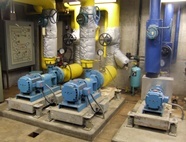
Hatten: St. Luke's Regional Medical Center in Boise is an ideal model for what tune-ups and recommissioning can do for existing hospitals. The energy savings is tremendous. For the first phase of diagnostics, we looked at the 10 largest air handlers and found electric and gas savings potential of well over $250,000 per year. This represents an energy cost reduction of about 5% of the annual energy cost of the facility. We're now in the thick of implementing operational changes to capture those savings.
BetterBricks: What's the typical range of possible energy cost reductions from a tune-up and improved O&M practices that you are seeing in hospitals?
Hatten: We typically see potential for a 10-20 percent cost reduction, especially when strategic energy management (SEM) initiatives have been championed at the executive management levels. A key piece of information to look for is some kind of realistic performance goal and it seems that 20 percent is a very realistic goal.
However, the potential energy savings is much greater in large facilities such as an integrated medical campus with a substantial amount of equipment that operates continuously serving spaces that have variations on occupancy patterns.
"It's not about finding more operating or capital dollars. Rather, it's simply about reallocating the operating budgets already approved."
There are opportunities to cut energy use in half within certain portions of the facility if it's being operated like a hospital. I look at a clinic space to determine whether it's operating in a way that matches typical acute care occupancy patterns or in a manner that actually syncs up to the clinic occupancy patterns. These two instances always have very discreet occupied and unoccupied periods.
BetterBricks: What's the range if you add in retrofits and capital projects?
Hatten: We typically see total savings potential in the range of 20-40 percent when we add in retrofits and capital projects. That said, it's important to note there's a general lack of knowledge with respect to what's possible with tune-ups and retro-commissioning.
Once these first few hospitals complete a comprehensive tune-up throughout their facility, we'll be able to analyze the data to determine if energy savings were underestimated. I will not be surprised if we find that our initial estimates of savings were conservative. As these efforts are completed and the savings are documented, it will be important for this information to flow back into the conversation within the hospital community - both through professional organizations as well as incentives that the utilities offer.
BetterBricks: What needs to happen to achieve a higher level of energy savings?
Hatten: We need some model efforts, testimonials and real results. We are all striving to get to a point where facility managers can call on one another as resources and ask the right questions. By the end of 2009, we'll have several of those case studies. This will begin to change the whole conversation internally within the hospital. As more success stories find their way to the ASHE conferences and the state engineering conferences, there's going to be momentum building up among other facility managers to achieve what these model projects have accomplished. They'll think, "if they can do it, why am I not looking at that?" It is going to start a market initiative that can't really kick off until we have a few of those model efforts in place with results documented and verified so that information can start being exchanged.
BetterBricks: What are the top energy cost savings opportunities from tune-up and improved O&M?
Hatten: Every time I walk into a facility, the first place I focus on is occupancy patterns. I want to know how the systems are zoned and scheduled, and if they are operating consistently when people are in the facility - this is true for both HVAC and lighting.
- A big opportunity is to address lighting needs for the visual tasks being performed in a given space and understand lighting maintenance practices. Almost every facility has done a lighting retrofit project, so it's not about upgrading your lamp and ballast. Rather, it's about changing the way light levels are tuned and relamping is done. Lighting technology keeps marching on, which allows for group relamping to bump light levels up or down depending on the needs. In general, we're seeing a large potential to reduce lighting energy use.
- The other big opportunity areas are on the HVAC side. There are three big categories, which are all different manifestations of set point optimization. The first category is to look at the kinds of pressure conditions the facility is trying to maintain in the air distribution system. Usually, the general report is a shortage of pressure from day one. On the surface, this interpretation of operating conditions seems accurate. However, once you look under the hood, the area turns out to be rife with savings opportunities. In response to a "I'm too hot" complaint, a common response might be to increase the pressure set point to force more air through rather than truly understand what's making that zone hot in the first place. Over time, we end up with a bunch of systems with pressure set point cranked to the max - occasionally at set points higher than what the system can deliver.
- The second HVAC set point opportunity is on the temperature side. There're big potential savings here because there's a whole cascading series of interdependent temperature set points. Assess the set points starting at the space level then move to the group of set points that work internally to an air system. Know the temperature of the air being delivered and the temperature of the air as it enters into the air handling system. Finally, take a look at the set points that go back to the central plant - primarily the chiller plant. This also indirectly translates into questioning how much hospitals are running their chiller plants in cold weather conditions. It's not unusual for hospitals to run air conditioning when it's quite cold out. I tend to put this into a big opportunity category for temperature set points changes and optimization.
- The last of the big three are the air flow set points. These set points happen at two places - at the outside air intake and at the zone level. At the outside air intake, it's important to know the minimum outside air set point in really cold or hot weather. What people think the set points are and how much is actually being brought in are usually two very different numbers. We aim to restore original design intent to the air flow system. At the zone level, it is important to know the minimum airflow set point on these variable load volume terminal units. Knowing if it is set to the appropriate range can inform the operator if it could it be set lower to save heating and cooling energy.
BetterBricks: In this economy, we imagine that low-cost and no-cost opportunities are of particular interest to customers. Do the opportunities you've described fall in this category and what is a typical return on investment for the hospitals of these activities?
Hatten: Cost dynamics are quite a bit different than what we've historical thought about in respect to energy projects. Typically, it costs more to do the diagnostics and investigation phase than it does to implement the findings. In that respect, these are no-and-low cost opportunities. Paybacks might be as quick as a couple of months or more typically in the 4-8 month range. When we talk about internal rate of return, it becomes ridiculous because it usually is 300-400 percent.
BetterBricks: How do you convince people?
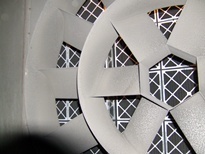
Hatten: Well, a four month payback is usually pretty compelling. The obstacle is rarely the payback, but rather the upfront costs to get started on the diagnostics phase and where that money comes from. Once a facility gets started, the economics for a sustained effort should fall into place. It's kind of like pushing a sled down a hill - once you get started, it is self perpetuating.
We're really not talking about trying to justify an investment in a conventional way. We are talking about what I call "boot-strapping" your way to energy efficiency. The first step is to take a percentage of a hospital's operating budget and invest it in the organization and facility to start getting energy savings. These savings can be thought of as a revenue stream, and that revenue can be used to fund more savings and so on. Each time a subsequent step is completed, the revenue stream becomes bigger.
We are fundamentally changing the way large hospitals maintain their facilities and it's very appropriate to talk about this boot-strapping model.
"Often times, a tune-up will uncover long standing problems with HVAC that have an adverse impact on indoor air quality, which is especially important in a hospital."
Ultimately, what they are doing is diverting some of the money they pay utilities to continue to reinvest and upgrade. It's quite a compelling vision, but it does imply some hesitation. Right now, it is still a little disconcerting to many folks who are accustomed to thinking of an energy project as a discreet thing just like building a new patient tower. What we are driving for is a new process, layered into the maintenance culture, that allows more dollars harvested from the existing operations budget to be reinvested in enhanced operations to improve energy efficiency over time.
It's a lifetime proposition, not a discreet project and "we're-done-with-it" kind of proposition. That's probably the biggest cultural shock I've observed in the conversation and the activities that we've had. We are changing a mindset.
BetterBricks: What does this mean for ongoing costs and new positions?
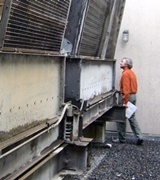
Hatten: Most advanced hospitals are starting to create resource conservation manager positions (RCM). This person is initially responsible for running the tune-up efforts and making sure implementation happens. It's incorrect to perceive this position as a cost at first. After the initial investment of the RCM's first-year salary while he or she establishes tune-up and improved O&M practices, this person then becomes a cost reduction because of the year after year savings. If the RCM leaves their position, the hospital will have to increase their operating budgets within a year because the persistence will be gone and they will be back consuming more energy.
It's more of a challenging concept to understand from the economic side. It is not about finding more operating or capital dollars. Rather, it's simply about reallocating the operating budgets already approved. Once a hospital starts this process, they are on a permanent reduced cost mode. Achieve the initial savings and keep those savings in place. It's that simple.
BetterBricks: How much does it cost for a large hospital to get started?
Hatten: Large hospitals typically need between $40,000 and $60,000 to get started with an acceptable scope of work. In the context of hospitals budget, that number isn't huge, but it has been an issue for some hospitals in the last couple of years. However, they must complete the first diagnostic and investigation phase and invest that money in order to reap the financial rewards down the line.
BetterBricks: What are the steps that need to be taken for the hospital to achieve these savings?
Hatten: This is really the BetterBricks model for energy savings. First, get commitment from the top of the organization down to communicate the organization's motivation to reduce the overall energy bill. This commitment creates a general line of accountability.
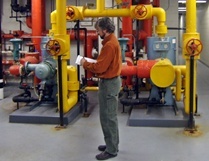
Second, assess what role tune-ups and retro-commissioning can play in achieving larger energy performance goals. Do the quick 50,000-foot-level energy assessment and determine how energy use compares to other hospitals. Collect information from facilities staff that has an operating history with the facility. Do a visual inspection and gather all relevant information to determine the opportunity areas.
The third step and most important, is moving from the assessment and scoping level to the first diagnostics effort, finding the funds to complete it and creating the action plan. By the time the action plan is fully implemented, it almost becomes a self-perpetuating program. There is some scope and planning discussion that needs to happen - defining who the team will be, what does the tune-up team look like, who is internal and external to the hospital, etc. The ideal situation is for the same team to work together on multiple efforts throughout the hospital.
Finally, close the loop on the first diagnostics and implementation with tracking and follow up. At the same time as implementation, have tracking, verification and persistence strategies in place. Some of that is education and training. Some of it is direct metering, sub-metering and monitoring. When the director of facilities is asked, "What have you done and how much energy has been saved," that director can very specifically provide data to illustrate the energy savings in each system. This step also sets the stage for the larger sharing of information with other institutions and professional organizations.
From there, simply repeat.
BetterBricks: Are there some aspects of this process that need to be accomplished by an outside service provider rather than internal operations staff?
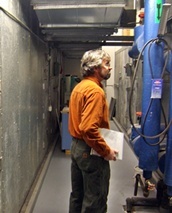
Hatten: In my experience, I have not seen any tune-up effort that can be done completely internally - both large and small. It doesn't seem practical in the context of the hospital building operations staff time constraits who are maintaining the facilities. Conversely, I cannot conceive of a tune-up taking place without their involvement. The one exception is if the hospital has appointed or is considering hiring an internal resource conservation manager (RCM). That position can take on a larger position in tune-ups.
Ultimately, a diverse skill set is needed to address these operational issues. Usually, the team consists of someone who knows the control systems inside and out and someone who knows energy efficiency and energy engineering. The second person is able to take these observed deficiencies and translate them into energy cost savings. These two skills rarely land in the same organization. Some knowledge and experience on both the design side and the major construction side about general HVAC is also helpful.
BetterBricks: What additional benefits do you think hospitals gain from this kind of approach besides energy cost savings?
Hatten: Often times, a tune-up will uncover long standing problems with HVAC that have an adverse impact on indoor air quality, which is especially important in a hospital. Through this process, the facilities staff may discover that an air intake has been clogged or is bringing in pollutants. A major benefit to hospitals is to address these system problems. In large hospitals, certain systems are neglected and are not operating as they should. A tune-up sleuths out these failures, repairs them and ultimately puts the system back in balance.
Finally, the education and ongoing knowledge the internal maintenance staff gains from this process is profound. It's a safe bet that any maintenance person involved in a retro-commissioning effort will emerge with much more detailed knowledge of the systems than they had going into it. That's because of both the direct hands on experience, but also the supplemental training and educational opportunities that would be part of the BetterBricks model for tune-ups and enhanced O&M.
BetterBricks: Are any of these ideas being taught in engineering school?
Hatten: Good question! I recently met with Joel Loveland and Kevin Van Den Wymelenberg, both BetterBricks Integrated Design Lab directors, to discuss the current higher education infrastructure. Joel mentioned that 20 years ago there were four professors teaching building energy systems within the four major schools of engineering in the Northwest. Today, there's only one professor left and he's close to retirement. Unfortunately, there are no new professors to fill these empty spaces. Higher education has not developed the capability to teach this even in a limited way. In fact, the capability has declined over the last 20 years in the Northwest.
This will be a hot subject in higher education over the next ten years. It starts with funding, but it certainly doesn't end there. Conventional education will be insufficient to meet the growing demand. The first 5-10 years on the job is when people learn the significant skills and knowledge. I tend to look at the entire education process as that whole window, which has historically taken the best and brightest about 10 year and rest of us about 15-20 years. We have to figure out how to take a beginning student entering a program all the way to a practicing professional on the job in half the time. Really, it should be an exciting challenge for energy educators and absolutely paramount to driving market change.
